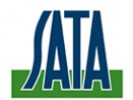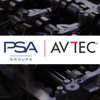6 Dimo Castings Jobs
Inspector
Dimo Castings
posted 18d ago
Job Role Insights
Flexible timing
Job Description
Quality Inspection: Conduct inspections and audits of products, materials, components, or systems to verify conformance with established quality standards, specifications, and requirements.Regulatory Compliance: Ensure compliance with applicable laws, regulations, codes, and industry standards governing product safety, environmental protection, occupational health, and consumer protection.Documentation Review: Review documentation, records, and technical specifications related to inspected items or processes to confirm accuracy, completeness, and adherence to documentation requirements.Physical Examination: Perform visual inspections, measurements, tests, and examinations of physical attributes, dimensions, and properties of inspected items using specialized tools, equipment, and instruments.Sampling and Testing: Collect samples, specimens, or test specimens from production batches, lots, or shipments for laboratory analysis, testing, or further evaluation as per sampling plans and testing protocols.Defect Identification: Identify and document defects, non-conformities, deviations, or discrepancies observed during inspections. Classify defects based on severity, impact, and risk factors to determine appropriate corrective actions.Root Cause Analysis: Investigate root causes of quality issues, failures, or discrepancies detected during inspections. Analyze data, trends, and patterns to identify underlying problems and recommend preventive measures.Corrective Action: Recommend corrective actions, preventive measures, and quality improvement initiatives to address identified issues, prevent recurrence, and enhance overall quality performance.
Employment Type: Full Time, Permanent
Read full job description What people at Dimo Castings are saying
What Dimo Castings employees are saying about work life
based on 10 employees
Flexible timing
Monday to Saturday
No travel
Day Shift
Similar Jobs for you
Share an Interview




























